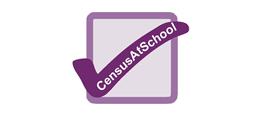- View more resources from this publisher
 CensusAtSchool
CensusAtSchool
Census at School
The CensusAtSchool UK project began in 2000 in conjunction with the National Statistics Office. The project, originally a one-off, was linked to the UK population census of 2001. It has now developed into a dynamic, ongoing and exciting initiative running in a number of countries.
It aims to:
• Involve students in collecting data about themselves and improve understanding of a data gathering process, its purpose and benefits to society
• Foster a positive attitude to statistics through using real data that is of interest to students
• Enhance the process of statistical enquiry across the curriculum
• Encourage effective Information and Communication Technology (ICT) teaching and learning, including the use of the Internet
• Provide access to large and meaningful data sets
• Make comparisons between the student responses in different countries.
This collection of resources from the project covers the whole primary and secondary age range. They have been written to help teachers use CensusAtSchool data in their classrooms, most are in worksheet format but many include data sets that run in Excel. A few solutions are also included.
These resources are made available under an open government licence v3.0.
Resources
Filter
Winning the Lottery
Aimed at students in Key Stage Four, this task from CensusAtSchool uses the context of the National Lottery to look at theoretical probabilities and compare these to a experimental data. The worksheet contains a link to a site to simulate a lottery draw. The activity allows students to investigate successive events...
Big Schools
This resource from CensusAtSchool contains the data of the number of students in twenty of the largest schools in England. Students are asked to consider how location may impact on the size of the school and the numbers of students in a year group. Students are also required to compare their own school to others by...
Birthdays
In this resource from CensusAtSchool. students compare data on month of birth from 45,000 South African students given in a table to the same data represented in a bar chart. Students are asked to consider reasons for month of birth and why it is appropriate to use percentages for large data sets.Students are then...
Box and Whisker Plots
In this resource from CensusAtSchool, students are guided through the use of box and whisker plots and the use of quartiles and the interquartile range. Students compare two sets of data of student heights by drawing box and whisker plots.
This is an opportunity to use graphic calculators.





